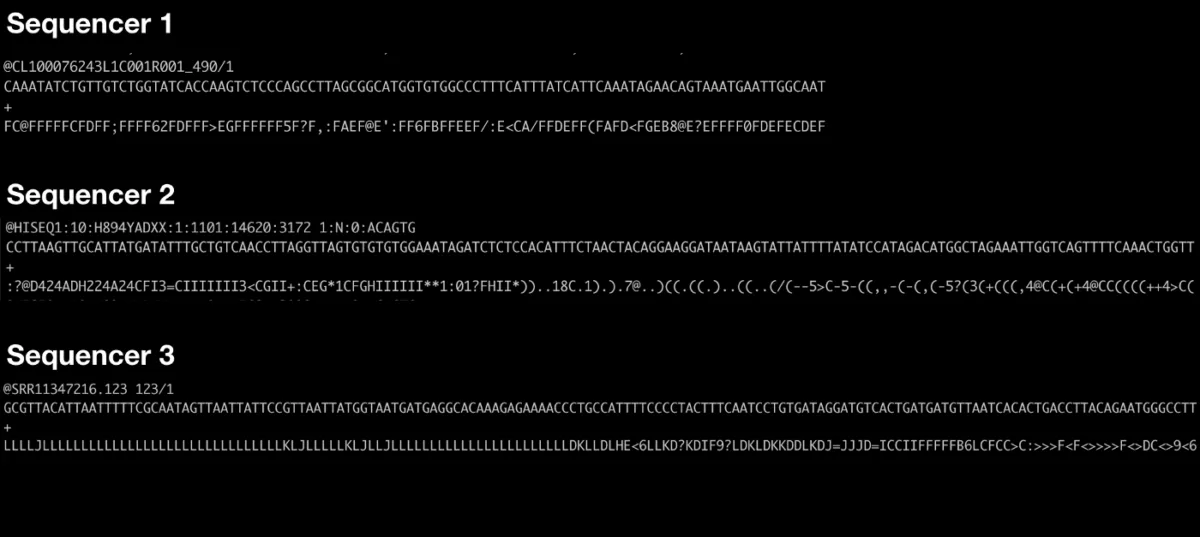Example sequences generated by three different types of sequencing hardware
By
analogy, we are not far from a world where sequences like this are a
commodity, where the exact hardware used to generate sequence data
becomes irrelevant or can be mixed and matched within a ‘quality grade’.
My colleague Yaniv Erlich has noted that “the aim of many experimental
techniques is to reduce the problems of nature to the determination of
DNA sequences”. The commoditization of genome sequences accelerates this
trend, such that a successful path to solving many industrial or
medical problems will be to reduce the problem to the determination of
DNA sequences.
This is already beginning to play out:
- In
medicine, the observation that cells throughout the body are constantly
releasing DNA into the bloodstream means that the detection of anything
from prenatal genetic conditions to cancer can be approached as a DNA
sequencing problem.
- In
agriculture, the problem of tracking of animals through a complex supply
chain is naturally considered a problem of DNA sequencing. Remarkably,
this is even more general, in that the problem of tracking the origin of
any material (even those without DNA) in a supply chain can be
approached similarly.
- Perhaps
most famously, the design of the first COVID vaccines was done by
companies that had never handled the virus; they had reduced key steps
of the R&D process to the simple step of “obtain a sequence”.
It
seems fruitful to consider how this trend will influence different
industries over the coming years. At Gencove, our view is that the
genomics revolution will be driven by software — as data generation
becomes simpler and cheaper, in the long run the key genomics
technologies will be analytical rather than molecular. At the same time,
the molecular technologies necessary to generate sequencing data remain
a significant challenge, so to accelerate this transition we
additionally invest in tools to drive improvements in the cost and
throughput of data generation; for example, with protocols for
miniaturized library preparation.
We’re always looking to work with individuals or companies with similar goals; please reach out if you’d like to collaborate!

